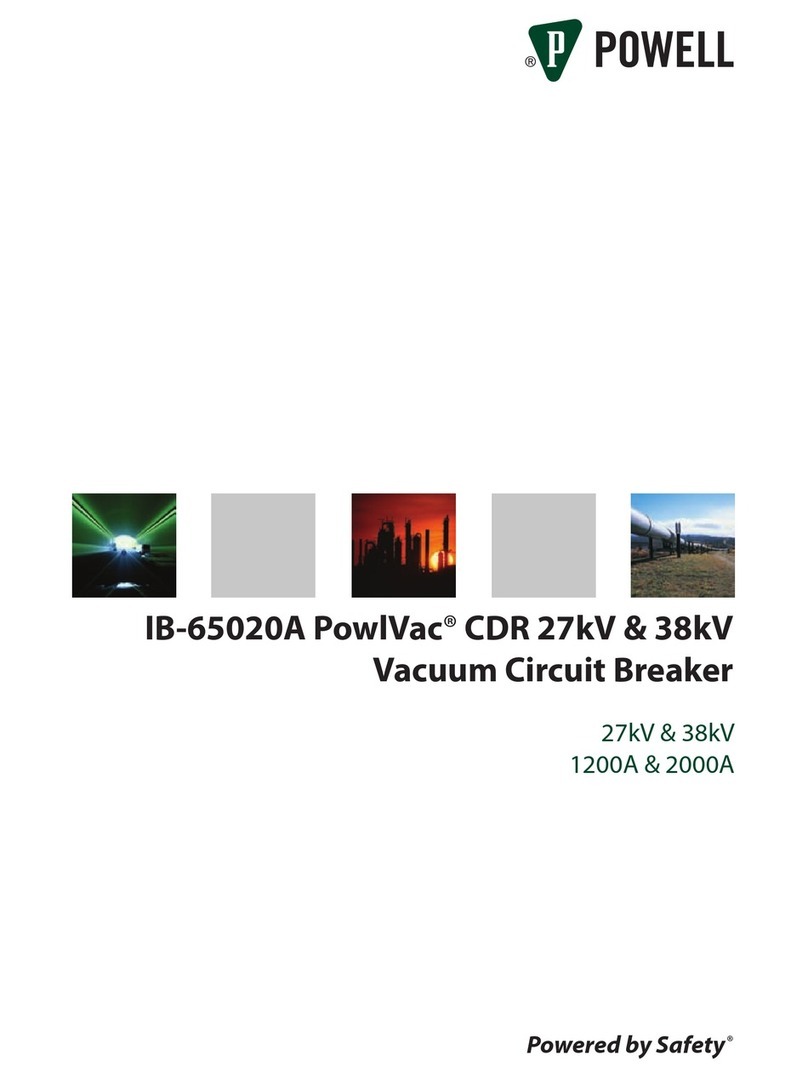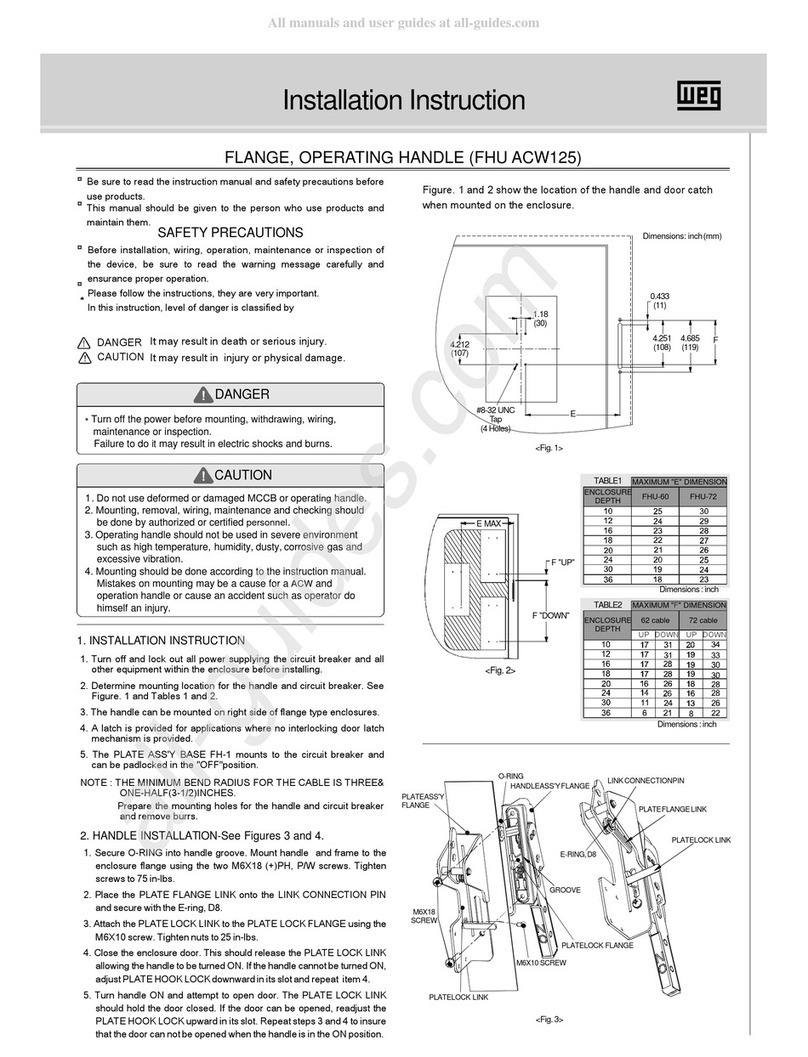
8
IB-60030
PowlVac®63kAASD Circuit Breaker
A. GENERAL
1. Onlysupervisedandqualifiedpersonneltrainedin
theusage, installation, operation, and maintenance
of the circuit breaker shall be allowed to work on
this equipment. It is mandatory that this instruc-
tionbulletin, any supplements, and service adviso-
riesbe studied, understood, and followed.
2. Maintenance programs must be consistent with
bothcustomerexperienceand manufacturer’s
recommendations,includingserviceadvisoriesand
theinstruction bulletin(s). Awell-planned and
executedroutine maintenance program is essential
for circuit breaker reliability and safety.
3. Serviceconditionsandcircuit breaker applications
shallalso be considered in the development of
suchprograms, including such variables as
ambienttemperature and humidity, actual continu-
ouscurrent, thermal cycling, number of operations,
interrupting duty, and any unusual local conditions
such as excessive dust, ash, corrosive atmo-
sphere,vermin,and insect problems.
B. SPECIFIC
1. DO NOT WORK ON AN ENERGIZED CIRCUIT
BREAKER. Ifwork must be performed on a circuit
breaker,removeitfromserviceandremoveitfrom
themetal-cladswitchgear.
2. DO NOT WORK ON A CIRCUIT BREAKER WITH
THECONTROLCIRCUIT ENERGIZED.
3. EXTREME CARE MUST BE EXERCISED TO
KEEP ALL PERSONNEL, TOOLS, AND OTHER
OBJECTS CLEAR OF MECHANISMS WHICH
ARE TO BE OPERATED, DISCHARGED, OR
RELEASED. Thecircuitbreaker utilize stored-
energy mechanisms. These mechanisms must be
servicedonly by skilled and knowledgeable
personnelcapable of releasing each spring load in
acontrolledmanner. Detailedinformationregard-
ing these mechanisms is found in this instruction
bulletin.
4. DO NOTATTEMPT TO CLOSE THE CIRCUIT
BREAKER MANUALLY ONAN ENERGIZED
CIRCUIT.
5. DO NOT USE AN OPEN CIRCUIT BREAKER
AS THE SOLE MEANS OF ISOLATINGA HIGH
VOLTAGE CIRCUIT. For complete isolation, the
circuit breaker shall be in the disconnected
position or shall be withdrawn completely.
6. ALL COMPONENTS SHALL BE DISCON-
NECTED BY MEANS OF A VISIBLE BREAK
AND SECURELY GROUNDED FOR THE
SAFETY OF PERSONNEL PERFORMING
MAINTENANCE OPERATIONS ON THE CIR-
CUITBREAKER.
7. Interlocksareprovidedtoensurethe proper
operatingsequences of the circuit breaker andfor
the safety of the user. If for any reason an inter-
lock does not function as described, do not make
any adjustments, modification, or deform the parts.
DO NOT FORCE THE PARTS INTO POSITION.
CONTACT POWELL ELECTRICALMANUFAC-
TURING COMPANY FOR INSTRUCTIONS.
C. X-RAYS
When high voltage is applied across the contacts of a
vacuuminterrupter, there isthe possibility of generation
of X-rays. The intensity of this radiation is dependent
on the peak voltage and the contact gap. At the
normaloperating voltage for this type of equipment, the
radiationlevels are negligible. At the voltagesspecified
for testing, test personnel shall be in front of the circuit
breaker such that the two layers of steel used in the
frameand front cover construction arebetween the test
personneland the vacuum interrupters, and that the
test personnel be no closer than one meter from the
frontofthecircuit breaker. THE CIRCUIT BREAKER
SHALL BE EITHER FULLY OPEN, OR FULLY
CLOSED WHEN MAKING HIGH POTENTIAL
TESTS. DO NOT TEST WITH THE CONTACTS
PARTIALLY OPEN.
D. SAFETY LABELS
ThecircuitbreakerhasDANGER, WARNING, CAU-
TION, and instruction labels attached to various
locations. Allequipment DANGER, WARNING,
CAUTION,and instruction labelsshall beobserved
when the automatic secondary disconnect is handled,
operated,ormaintained.



































